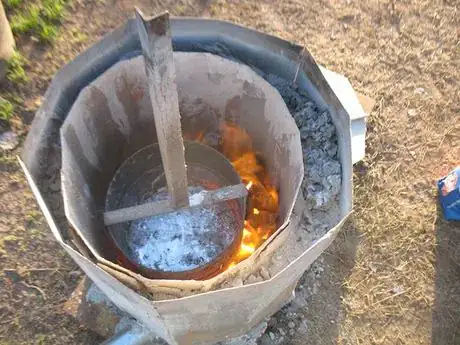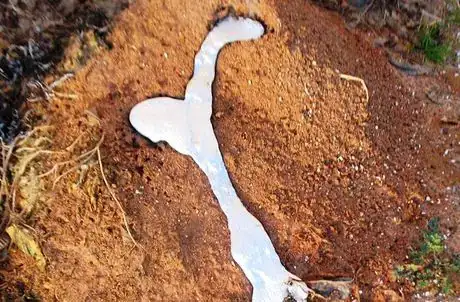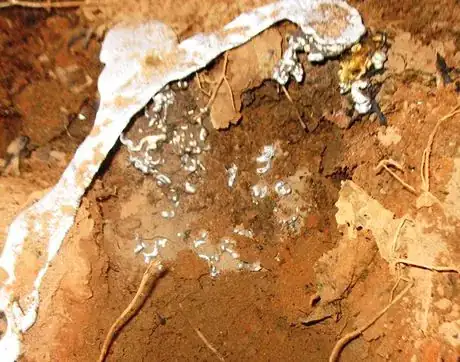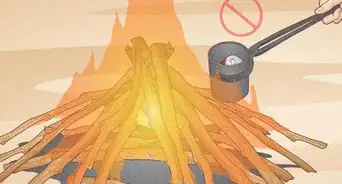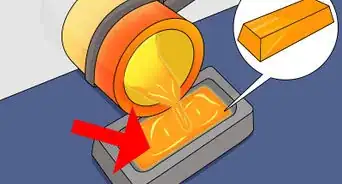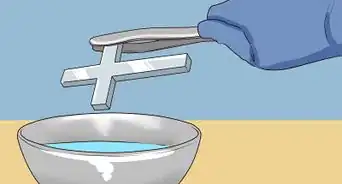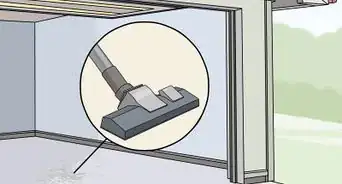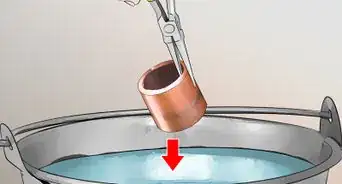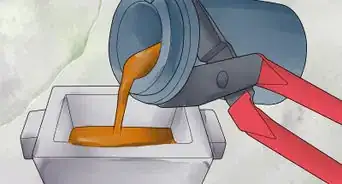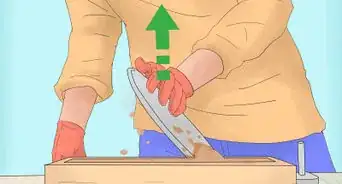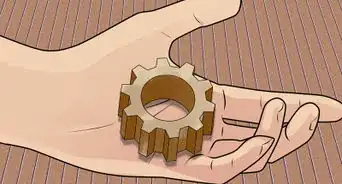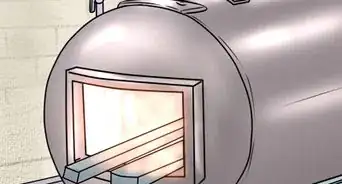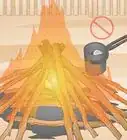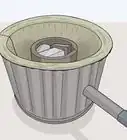wikiHow is a “wiki,” similar to Wikipedia, which means that many of our articles are co-written by multiple authors. To create this article, 9 people, some anonymous, worked to edit and improve it over time.
wikiHow marks an article as reader-approved once it receives enough positive feedback. In this case, 92% of readers who voted found the article helpful, earning it our reader-approved status.
This article has been viewed 54,751 times.
Learn more...
Ant beds have long been a mystery, since the only observable feature that can be seen is the entrance. A biologist has discovered, however, that by pouring molten aluminum into the bed, a perfect casting of the complex tunnels and open spaces can be made, excavated, and even displayed as a unique model of an underground labyrinth.
Steps
-
1Set up a furnace to melt your aluminum. You can build a simple one using a metal pail, charcoal, and a hair dryer, along with some other commonly available items. If you are adventurous, you can even build a more substantial one, read about it here.
-
2Locate your aluminum. Aluminum cans have a very low recovery rate if melted in an open air furnace, so look for cast aluminum scrap like automotive parts, aluminum extrusions, or other heavy pieces.Advertisement
-
3Find an ant bed you have access to. Since casting the mound will kill the ants, you may want to find an ant bed in the fall, and wait until winter when the bed is abandoned (or at least the inhabitants are dormant, deep in the ground). Many homeowners poison beds in their lawns, so you should be able to find one that will have a minimum environmental damage. Also, remember that removing the casting will require a substantial excavation, so be prepared to restore the area you choose.
-
4Melt your aluminum. You will have to take a guess at how much you need, the bed in the photos weights about 18 pounds, but at any rate, play it safe and melt more than you anticipate using. You can always pour another casting of something with any excess.
-
5Enlarge the entrance to the mound slightly and create a small depression around it for the aluminum to flow into. Clear any flammable debris from the area, and make sure you have water or a fire extinguisher handy.
-
6Pour the molten aluminum carefully but quickly into the mound entrance. Continue pouring until the aluminum overflows the entrance so it is completely filled.
-
7Allow an hour or so for the aluminum to cool sufficiently to be touched. You can spray the top of the mound with water to speed the cooling, but it will be messy when you begin digging your casting out of the ground.
-
8Use a sharp pointed tool to probe the mound carefully, so you can determine the extent of the casting below the ground. Once you have the general area probed and limits established, you can begin to scrape the soil away from the aluminum.
-
9Uncover the top 6 to 12 inches (15.2 to 30.5 cm) of the casting, so that you are level with the adjacent ground or slightly below it. You can continue scraping and digging, but remember, many of the smaller tunnels and chambers are very delicate, so proceed with caution.
-
10Dig a hole beside the mound about three feet deep, being careful to avoid damaging offshoot tunnels or chambers. This will allow the deeper material you scrape away to fall away easily.
-
11Use a water hose to wash the dirt out from between the chambers and tunnels, as well as to expose more of the casting if you are near a water spigot. This will make damaging the casting less likely and allow you to work faster.
-
12Continue to remove the soil from around the casting until it becomes loose, the carefully pull it free of the ground. You can now rinse the remaining dirt out of the casting and get it ready to examine.
Warnings
- Molten aluminum is extremely dangerous, use safety goggles and welding gloves when handling this material, and wear sturdy boots, heavy trousers, and a long sleeved shirt during this project.⧼thumbs_response⧽
- Keep a fire extinguisher or water source handy, but do not spray water into the molten aluminum, an extreme reaction would occur.⧼thumbs_response⧽
- Ants can inflict a painful sting, and many people are allergic to their sting.⧼thumbs_response⧽
Things You'll Need
- Aluminum
- Melting furnace
- Ant bed
- Safety equipment


